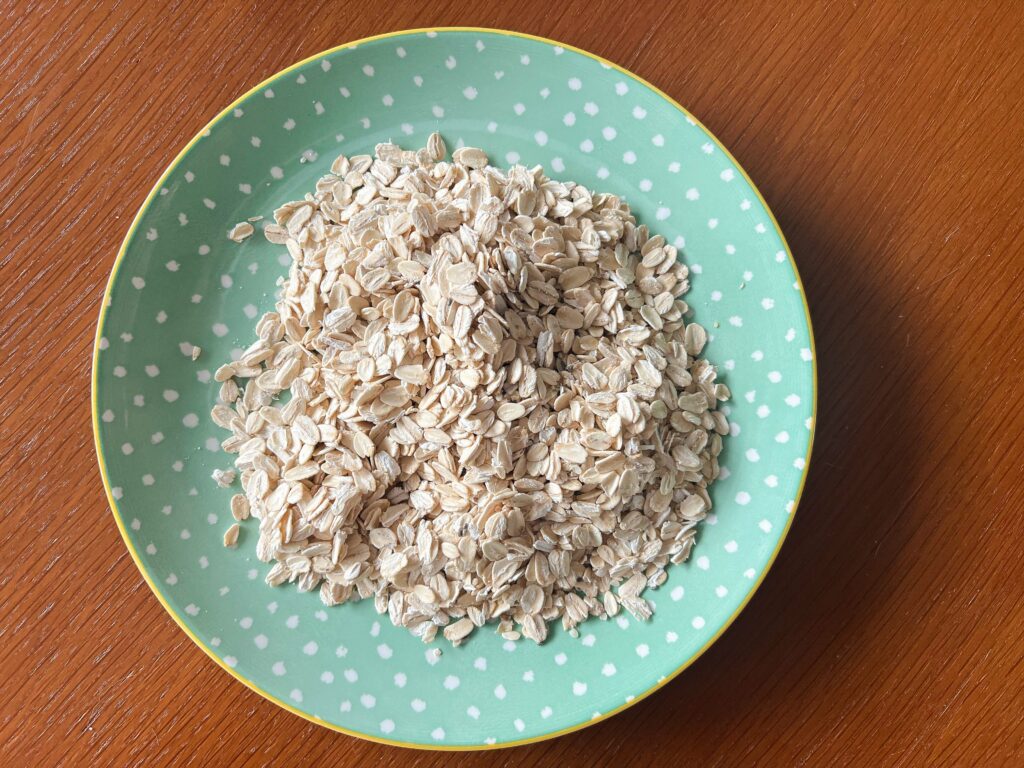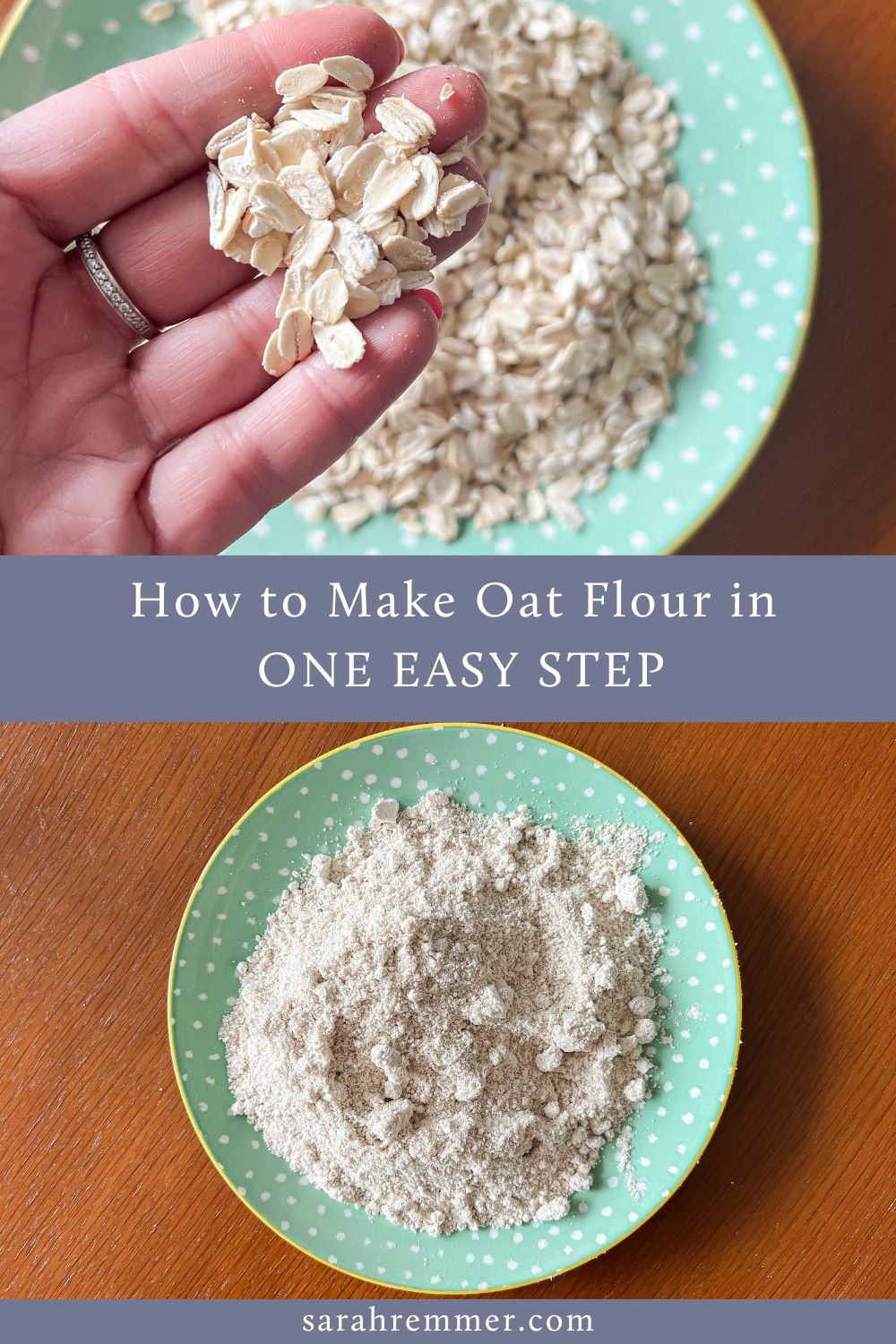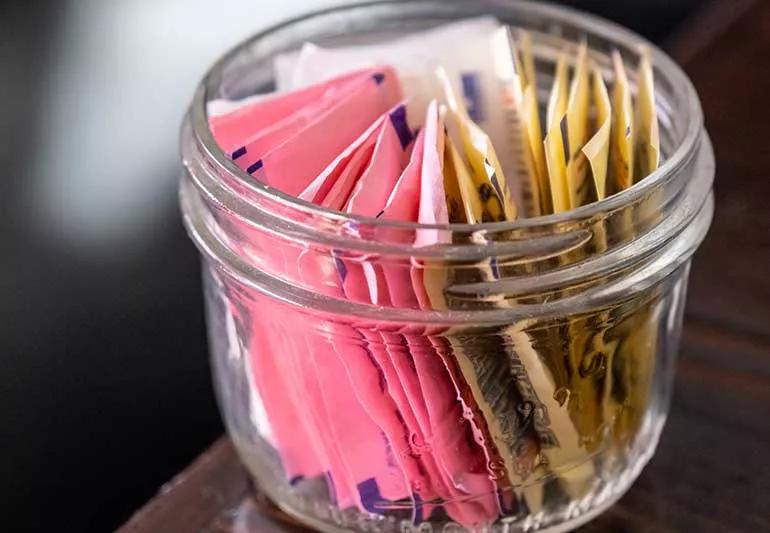How to Make Oat Flour in One Easy Step
This dietitian-approved baking hack not only simplifies the baking process, but also adds lots of nutrition too! Learn how to make your own oat flour in one step, and how it can save you time, money and create delicious, easy family-friendly recipes, too!

Oat flour has gained a lot of popularity in the last few years when it comes to baking. And for good reason! The dietitian in me loves this trend because oats are packed full of nutrition and staying power. The mom in me loves how incredibly easy it is to make at home, in literally one step (see recipe below). Oat flour is perfect for kid-friendly recipes like muffins (try these one-bowl banana chocolate chip ones, or these gluten-free blueberry lemon muffins), cookies (we love these soft and fluffy apple cookies), overnight oats, pancakes and more, plus it’s easy enough for kids to make all on their own. It produces a kid-pleasing delicious product, with natural and subtle sweet and nutty flavors.
Why make and use oat flour for baking?
It’s super easy
Making oat flour takes no time at all and requires only one ingredient – oats! You can use any type of oats (rolled oats, quick oats, and even steel-cut oats!). All you do is pour them into a good quality blender and blend until it makes a fine flour!

It can simplify baking
When you replace traditional wheat flour with oat flour (or even whole rolled oats) it cuts down the steps you need to take in the baking process. Let me explain…
Wheat flour contains quite a bit of gluten, which is the protein portion of the whole wheat grain. Gluten helps to bind the ingredients together in baking recipes (as does eggs). When you use gluten-containing flour in baking, it’s important not to over-mix.

Mixing gluten-containing flour with liquids will activate the gluten protein that give baked goods their structure, and over-mixing can lead to baked goods (cookies, cakes, muffins, pancakes, and breads) that really gummy, thick/tough and unpleasantly chewy. That’s not what we want! But when using oat flour (specifically made with gluten-free oats), we don’t have this problem—we can mix to our heart’s content!
This is why I use oats and oat flour in a lot of my most popular muffin, cookie and pancake recipes—I can literally throw all of the ingredients into a blender or food processor and blend in one step! Try my Green Monster Blender Muffins, my Chocolate Zucchini Blender Muffins and my Carrot Cake Blender Pancakes!
Oat flour is safe for people with Celiac Disease or gluten intolerance
If you choose an oat flour that is certified gluten free, it is safe for those with Celiac Disease or those who have a gluten intolerance. I find that oat flour renders the most pleasant and traditional-tasting/textured baked good when compared to other gluten-free flours too!

Oat flour is economical compared to other gluten-free flours
Making your own oat flour is not only super easy but also economical. Store-bought oat flour, and other store-bought gluten-free flours (such as almond flour or chickpea flour) can be pricey.
Oat flour is very nutritious
Oats are packed full of soluble fibre- a type of fibre that keeps you fuller longer, naturally decreases your cholesterol levels and stabilizes your blood sugar levels. Oats offer energy (carbohydrates) to fuel your day, but also “staying power”, keeping you satisfied longer. They are also a great source of thiamine, iron and certain anti-oxidants.

How to make oat flour in one step
This is the best part: it takes one, simple step to make your own oat flour! All you have to do is pour your oats (quick cooking oats, rolled oats, large flake oats, sprouted oats, or steelcut oats) into a blender or food processor and blend until you get your desired consistency (I like mine really fine, so blend for longer). I usually use rolled oats (large flake oats), but you can also use quick cooking oats or even steelcut oats. When you blend steelcut oats, it will take about twice as long because they are so dense.


How do I substitute regular wheat flour with oat flour?
When you blend one cup of oats (quick cooking oats, or large flake oats), it renders one cup of oat flour. But when you blend 1 cup of steelcut oats, it will render about 2 cups of oat flour.
When substituting oat flour for traditional flour, you’ll want to add about 40% extra. This means, if a recipe calls for 1 cup of wheat flour, you’d use about 1.4 cups of oat flour. The reason for this is that oat flour is lighter in weight compared to wheat flour.
Another oat flour tip is this: when you use oat flour in a recipe, let the batter sit for 1 minutes before you bake. This helps the oat flour to hydrate and absorb the liquid in the batter, rendering a thicker more even (and nicer!) product.

How to store oat flour
Oat flour should be stored in an airtight container in a cool, dry place, such as a pantry or cupboard. It’s important to keep the container tightly sealed to prevent moisture from entering and potentially causing the oat flour to spoil or clump together.
If you want to extend the shelf life of oat flour, you can also store it in the refrigerator or freezer. Just make sure to transfer the oat flour to an airtight container or resealable plastic bag before placing it in the refrigerator or freezer. When you’re ready to use the oat flour, allow it to come to room temperature before using it in your recipes.

Oat Flour in One Easy Step
Yield:
1 cup
Prep Time:
5 minutes
Total Time:
5 minutes
This dietitian-approved baking hack not only simplifies the baking process, but also adds lots of nutrition too! Learn how to make your own oat flour in one step, and how it can save you time, money and create delicious, easy family-friendly recipes, too!
Ingredients
- 1 cup of oats (rolled oats, quick-cooking oats, steel-cut oats, sprouted oats)
- Blender of choice
Instructions
- Pour oats into a blender or food processor and blend until fine and smooth (or until it reaches desired consistency). See notes below.
Notes
*Note 1: Steelcut oats will take longer to blend than the other varieties, and will render twice as much oat flour.
*Note 2: One cup of oats will render 1 cup of oat flour, unless it’s steelcut oats, which will render twice as much oat flour.
*Note 3: Substitute 40% extra oat flour than regular flour. That means, if a recipe calls for 1 cup of regular flour, use 1.4 cups of oat flour as a replacement.
*Note 4: Only fill blender or food processor up about ½ full for better and more even results.









